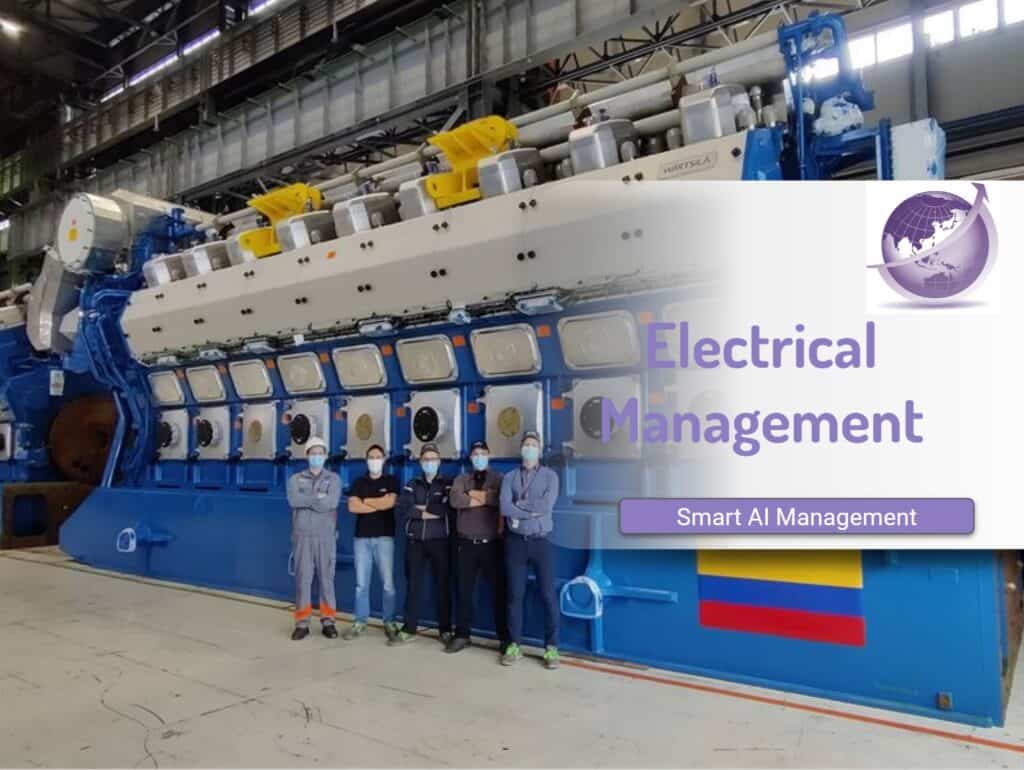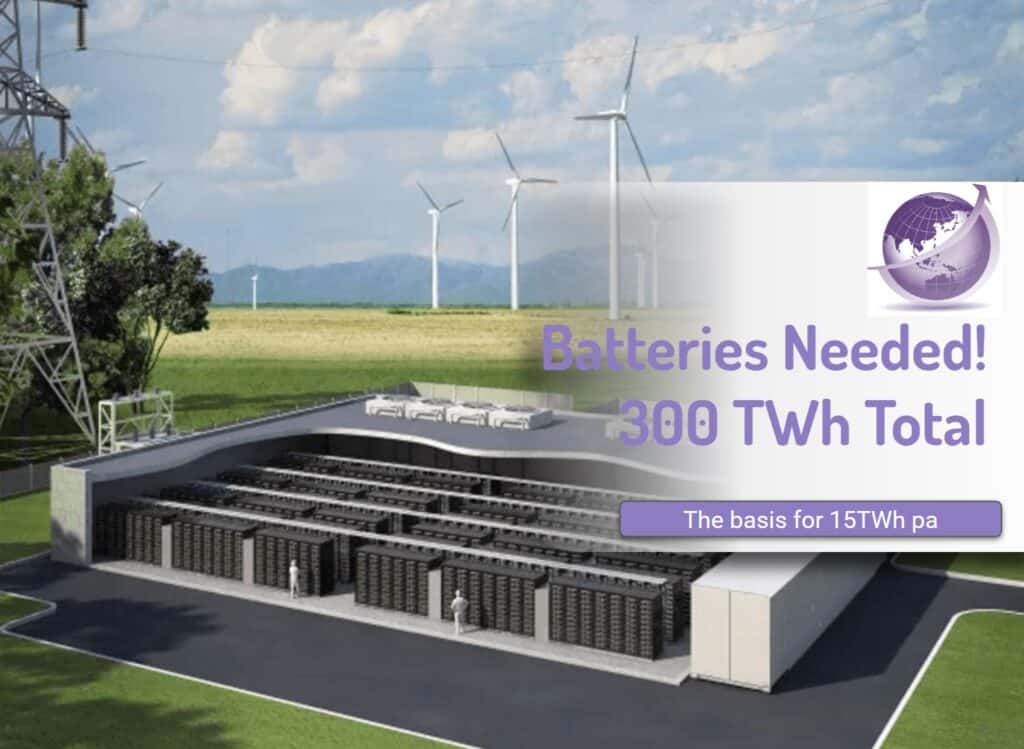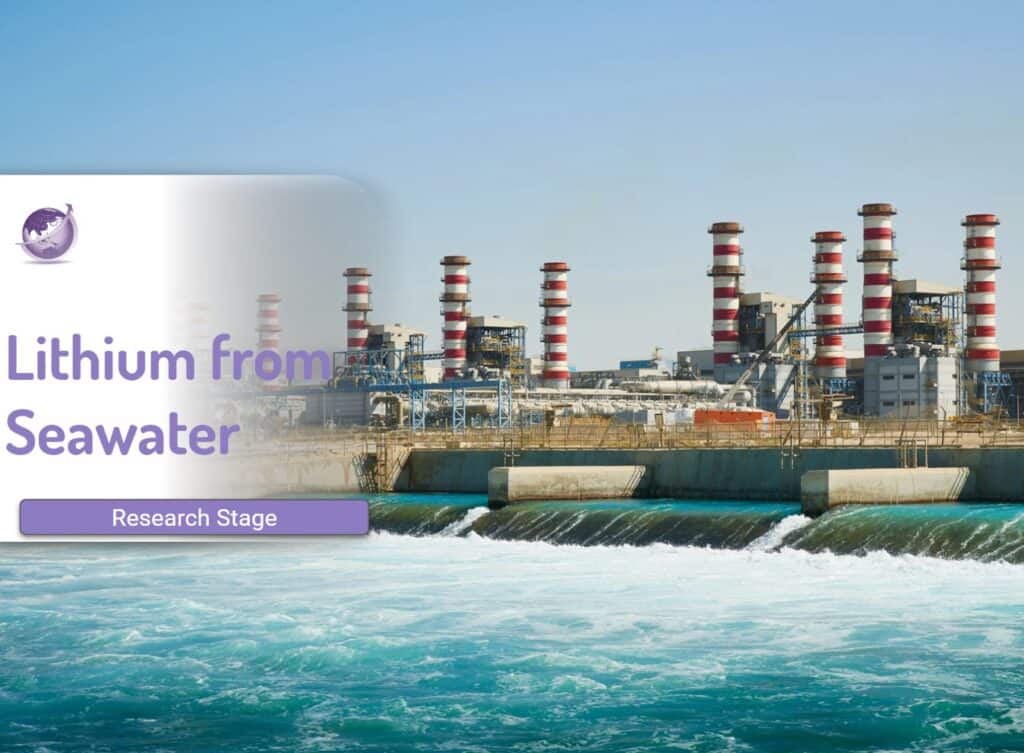Pumped hydro as a battery will be part of the renewable energy disruption. These will be both onshore and offshore. Hydropower is about 1/6th of the global energy supply with about 1,200GW. Hydro generation is nearly 60% higher than nuclear energy and greater than all other renewables combined, including wind, solar PV, bioenergy and geothermal. The opportunity is to change to wind and solar, and use hydro as a battery and reuse the limited water and sites for dam construction and environmental challenges.
What is Pumped Hydro
Short-term off-river pumped hydro energy storage (“STORES”) sites require pairs of reservoirs at different altitudes, typically ranging from 10 hectares to 100 hectares, in hilly terrain and joined by a pipe with a pump and turbine. Water is pumped uphill when wind and solar energy is plentiful, and electricity is available on demand by releasing the stored water through a turbine. Pumped hydro simply relies on gravity and water and does the opposite of existing hydroelectric power stations. Sometimes the water turbines and generators are specialised to have bi-directional, and sometimes different mechanical systems – one for hydro generation and one for using electricity to pump back uphill. New ones are likely to be a single unit.

Costs of Pumped Hydro As a Battery In Australia

Assumptions in Sheet
- Kidson https://genexpower.com.au/250mw-kidston-pumped-storage-hydro-project/
- Also https://infrastructuremagazine.com.au/2021/05/25/777-million-kidston-pumped-hydro-reaches-financial-closure/
- Genex battery example https://genexpower.com.au/bouldercombe-battery-project/
- Tesla https://www.tesla.com/megapack/design
- Snowy 2.0 e.g AFR https://www.afr.com/companies/energy/the-battle-to-build-snowy-2-0-heats-up-20220303-p5a1i2,
- Snowy Site https://www.snowyhydro.com.au/snowy-20/faqs/
Model Limitations
- Assumption of an economic life of 10 years based on Net Present Value and discounting of future value.
- The Capex number is as reported.
- The lifetime of a pumped hydro system might be 100 years, and batteries may last longer or shorter depending on energy management systems and usage. There may be alternatives in a decade.
- Some systems might be able to have multiple charge/discharge cycles per day, which will further reduce the Capex cost per MWh. An example is that the discharge cycle might be between 5 to 9am, and 5pm to 9pm when demand spikes.
- The unknown issue is the size of the storage versus capacity. There is big difference between storage systems that have a discharge time measured in hours, compared to systems measured in days. E.g a Tesla battery could discharge for 4 hours in one evening, but it requires the same amount of power the next day if it is to do the same the following evening. It will be impacted on occasions when “the wind don’t blow & the sun don’t shine”.
Snowy Hydro Assumptions
- Snowy is more flexible. The theoretical capacity is 175hr of full power output, or just over 7 days. Or 4 hours an evening for six weeks without any recharging.
- Assuming that it fully discharges and then recharges at the same rate, an equal amount of time is spent recharging as discharging, so the maximum number of cycles per year is only 25.
- Looking at it another way, if half the time is spent recharging, the probable output per day is 2GW for 8 hours = 16GWh for 365 cycles a year which gives the same result of six times the quoted Capex/MWh over 10 years.
- Another option is that the maximum capacity is 2GW. If it discharges for 8 hours per day, for 365 days, then effectively it is infinite.
- Given that the likelihood is so low of such extended periods with no chance to recharge, it seems unlikely that the Snowy 2.0 would ever be completely recharged. In some senses, its capacity could be considered virtually infinite.
Snowy 2.0 Pumped Hydro Scheme
The Snowy is an existing hydro system, started in 1949 and completed in 1974 at a total cost of $820 million. The Scheme is 9 power stations, 16 major dams, 80 kilometres of aqueducts and 145 kilometres of interconnected tunnels. It has an existing pumped hydro capabilities at the Tumut 3 power station. The 9 power stations have 33 turbines with a total generating capacity of 4,100 MW and produce on average, 4,500 GWh pa. Snowy 2 adds another unit between Tantagara and Talbingo. However, the Snowy system does not have sufficient transmission for Snowy 2 and this almost doubles the cost. Snowy has contracted 1GW of wind and solar to pump water. HumeLink project costing is here.

Energy from Water
Energy in gravitational storage is very low. To get the amount of energy stored in a single AA battery, we would have to lift 100 kg to 10 m to match it. Or for 1litre of petrol, need 4 tons of water one kilometre high! So hydro needs height and storage. E.g. The Kidston pumped hydro is 250MW for 8 hours with 2 reservoirs of 50ha and 218m elevation.
Simple formula: Energy =mass X acceleration X distance. Also have to discount losses due to tunnel length, and efficiency of turbines which are claimed to be over 90% efficient.
- The formula is P = η ρ Q g h
where:
P is power in watts - η is the dimensionless efficiency of the turbine (90%)
- ρ is the density of water in kilograms per cubic metre (~ 1 tonne)
- Q is the flow in cubic metres per second
- g is the acceleration due to gravity (9.8ms-2 )
- h is the height difference between inlet and outlet (m)
Can Hydro Supply Australias Needs?
These figures are courtesy of Nathan from NEM Watch on Facebook. The answer is no.
- OpenNEM quotes the NEM for the last 24 hrs (14/6/22): 25.4 GW or 612 GWh and peak demand from 29 to 35GW of capacity.
- For 25.4 GW at 100m = 2,488 GL/d ie. 1.24 Waragambas each day.
- 1 Eucumbene = 2.4 W’gambas = 9.6 SydHarbs
- However most dams only have about 10m of height available for use in hydro. The rest of storage is to get the dam to 100m (or so). Then the rainfall or snow melt is needed, and is the case in hydro schemes around the world the limitation usually comes down to intermittent rain or too much rain (wasted water flow) or there are statutory requirements to have river flow so water is released when there is no energy demand.
Dams are a sore point. The Three Gorges dam in China is 22GW but the dam displaced 1.3 to 1.9m m people in 1500 towns, 1200 archeological sites and goes for 600km. It’s spectacular BUT dumb. 1466 wind modern turbines @ 15MW = 22 GW. and if offshore affects no one.
Australian Potential
In a study from Australia National University in 2017 lead researcher Professor Andrew Blakers said the short-term off-river pumped hydro energy storage (STORES) sites combined had a potential storage capacity of 67,000 Gigawatt-hours (GWh) – much more than the capacity required for a zero-emissions grid. “Australia needs only a tiny fraction of these sites for pumped hydro storage – about 450 GWh of storage – to support a 100 per cent renewable electricity system,” said Professor Blakers from the ANU Research School of Engineering.
Australian Sites
| State | Approximate sites | Approximate energy storage (GWh) | Head* (metres) | |
|---|---|---|---|---|
| NSW/ACT | 8,600 | 29,000 | 300 | |
| Victoria | 4,400 | 11,000 | 300 | |
| Tasmania | 2,050 | 6,000 | 300 | |
| Queensland | 1,770 | 7,000 | 300 | |
| South Australia | 185 | 500 | 300 | |
| Western Australia | 3,800 | 9,000 | 200 | |
| Northern Territory | 1,550 | 5,000 | 200 | |
| TOTAL | 22,000 | 67,000 |
Ocean Pumped Hydro
Ocean Grazer has developed a proof of concept pumped hydro, modular that fits on and under the seafloor making it ideal for offshore windfarms. It uses a clean water reservoir and a bladder system with the pump / generator connecting the two. To store energy, the system pumps water from the rigid reservoirs into the flexible bladders on the seabed. Now the energy is stored as potential energy in the form of water under high pressure. When there is demand for power, water flows back from the flexible bladders to the low-pressure rigid reservoirs. Driving multiple hydro turbines to generate electricity.
They envisage these to be paired with each wind turbine and provide 80% efficiency.

Hydro Power Globally
The challenge for more hydro power is the social and environment challenges to flood new valleys. But using natural sites such as old mine sites or changing existing hydro to become bi-directional is the challenge. Check out this report on global hydro.

China Announces Pumped Hydro Expansion
China will start construction on more than 200 pumped hydro stations with a combined capacity of 270GW by 2025 and reported in the Straits Time. That’s more than the capacity of all the power plants in Japan, and would be enough to meet about 23 per cent of China’s peak demand.
China has been eyeing a major pumped hydro build-out since 2020. In early 2021, they stated 680GW with a possibility of 180 gigawatts by 2025 but the final version (late 2021) said 65 GW by 2025, and 120GW of capacity by 2030. Now it has increased 4 times to 275GW by 2025.

The Fengning Pumped Storage Power Station is the worlds largest. It was opened in late 2021. In China’s Hebei province, the 3.6GW facility consists of 12 reversible pump generating sets with a capacity of 300MW each. It has a power generation capacity from storage of 6.612 billion kWh. The construction of the $1.87 billion project, was implemented in two 1.8GW phases, and built by China Gezhouba Group Company Limited in 2014. It is connected to the Zhangbei VSC-HVDC power grid and the North China 500kV power grid.
Update 2023
From Renewables Now, in May 2023, China had 50 GW of operational pumped-storage capacity, 30% of global capacity, and 89 GW of capacity currently under construction.

Switzerland Pumped Hydro as a Battery
The Nant de Drance plant was started in 2008, but only comes online Sept 2022. It is 900MW/20GWh
- 600m below ground in a cavern between the Emosson and Vieux Emosson reservoirs.
- 14 years of construction.
- Cost of CHF2.2 billion (US$2.3 billion)
- six turbines with a nameplate capacity of 150MW = 900MW.
- The upper Vieux Emosson reservoir is at altitude of 2,200m holds 25 million m3 water
- 425m head of penstocks to turbines
- Energy of 20GWh.
- Maximum duration of dispatch of 20 hours.
- The Vieux Emosson dam was raised by 21.5m
- 80% yield
- The Nant de Drance plant sits 600m below ground in a cavern between the Emosson and Vieux Emosson reservoirs
- The power house cavern is 194m long, 52m high and 32m wide.
- Excavation of 400,000 m3 of rock and drilling of 17km of tunnels.

RheEnergise HD Pumped Hydro
UK startup RheEnergise’s hydro system doesn’t use water at all, but a proprietary high-density fluid. Named R-19 it is 2.5 times denser than water. While the company is all hush-hush about the chemistry behind the gloop, it is said to be made from “ultra-cheap” materials and is non-toxic to the environment.
The benefit of using this fluid instead of water is it generates the same amount of electricity from just 40% of the elevation change, using tanks 40% of the size — think hills and underground tanks instead of mountains and huge dams. This means a smaller system that can be deployed faster, at more sites, and with fewer costs, or at least that’s the idea and RheEnergise (more info here) say there are 6,500 sites in UK. Projects will range from 5MW to 100MW of power and can work with vertical elevations as low as 100 metres or less.
RheEnergise plans for the first 5MW grid-scale project in operation in 2026.

Australia Pumped Hydro
EnergyAustralia released the details of its proposed first pumped hydro project near Lithgow in NSW and hopes to complete environmental studies in the next six months and then seek planning approvals, with the view to making an investment decision in 2025 for the project, which will be likely sized at 335 MW, with eight hours of storage. (see RenewEconomy)
Is it likely? Civil costs rise, battery costs fall.

Pumped Hydro Vs LiOn and Flow Batteries

Pumped Hydro Vs Long Term Storage
Other longer-duration storage is available. The table below (from the Guardian) assesses multiple technologies for the proposed Queensland Borumba and Burdekin dams.
| Case | Parameter | Unit | LiOn Batteries | Redox Batteries | Pumped Hydro PHES | A-CASE (compressed air) | ETESe Thermal Battery | CST Concentrated solar |
|---|---|---|---|---|---|---|---|---|
| 2025 | Cycle life | Total cycles | 6,000 | 18,000 | 30,000 | 30,000 | 30,000 | 30,000 |
| Technical life | Years | 15 | 20 | 35 | 35 | 35 | 35 | |
| Round-Trip Efficiency | % | 81 | 66 | 75 | 60 | 42 | 42 | |
| Power Capital Costs | $/kW Installed | 451 | 2855 | 1883 | 2310 | 2028 | 2028 | |
| Energy Capital Costs | $/kWh Installed | 265 | 372 | 70 | 123 | 52 | 52 | |
| OPEX | % CAPEX/yr | 1 | 1 | 1 | 1 | 1 | 1 | |
| 2050 | Cycle life | Total cycles | 7,300 | 18,000 | 50,000 | 50,000 | 30,000 | 30,000 |
| Technical life | Years | 20 | 20 | 35 | 35 | 35 | 35 | |
| Round-Trip Efficiency | % | 90 | 72 | 81 | 65 | 42 | 42 | |
| Power Capital Costs | $/kW installed | 307 | 1686 | 1804 | 1950 | 1056 | 1056 | |
| Energy Capital Costs | $/kWh installed | 164 | 217 | 67 | 61 | 27 | 27 | |
| OPEX | % CAPEX/yr | 1 | 1 | 1 | 1 | 1 | 1 | |
| Guardian Graphic | Source: CSIRO A-CAES, adiabatic compressed air energy storage; CST, concentrated solar thermal; eTESe, thermal energy storage (electricity input, electricity output); OPEX, operational expenditure | ||||||||
Renewable energy is a political business in Australia, and none so much as in Queensland where the LNP want to change the plans Labor put in place. The plan aims to have 50 % of the state powered by renewable energy by 2030, 70% by 2032 and 80% by 2035, with an emissions reduction target of 75% by 2035.
More Reading
[1] Snowy 3.0? Experts say Australia has ‘so many good sites’ for more pumped hydro https://www.theguardian.com/environment/article/2024/jul/14/snowy-30-experts-say-australia-has-so-many-good-sites-for-more-pumped-hydro
[2] Pumped hydro’s future uncertain in Queensland ahead of looming budget and state election https://www.abc.net.au/news/2024-06-10/pumped-hydro-future-uncertain-in-queensland/103951806









